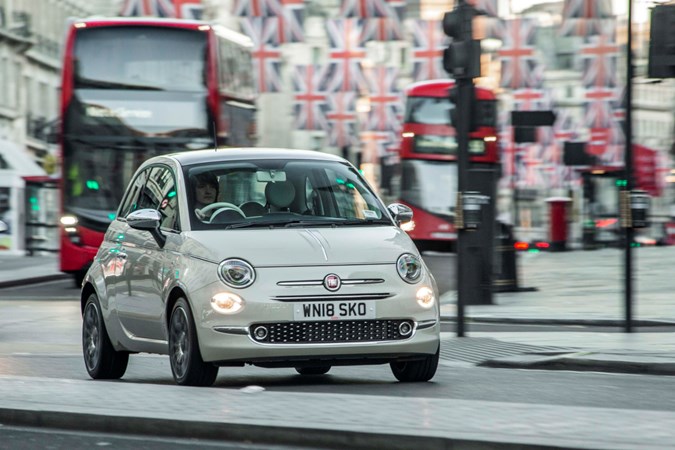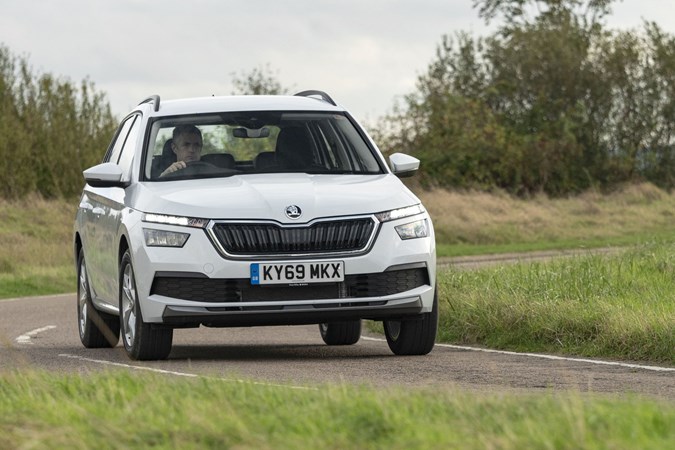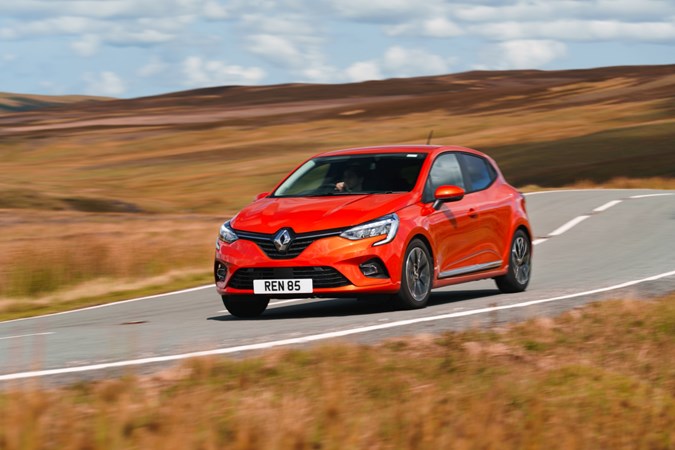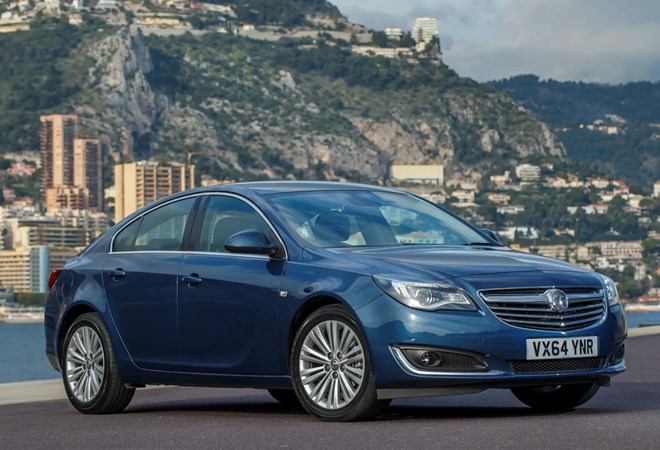Pre Coronavirus (COVID-19) pandemic, an article like this would probably have started off with something about cancelled trains, being stuck in the rain, and running for buses. But in the world we live in, and one that’s slowly beginning to ease lockdown restrictions, it’s all about staying safe and doing the right thing.
Right now, it makes more sense to follow government advice and get off public transport and behind the wheel of your own car. While major mass transit systems are back on the cards in big cities like London, images of overcrowded tubes and buses have been circulating social media to much criticism – and alarm for anyone who cares about social distancing.
Even the Transport Secretary, Grant Shapps, suggested he wouldn’t use public transport at the moment. In fact, the latest statistics show that 61% of people feel ‘uncomfortable’ around the perceived risk of infection from using public transport. Food for thought, and for those who live too far away from work to cycle or walk, a very different message from that of just a few months ago.

How to get to work without public transport?
That’s the big question, and it’s one that leaves plenty of people in a predicament. How do you get to work without taking public transport, when you live more than the 18-miles average commute? Walking is not an option, and cycling is just about on the cards if you’re fit, the weather is nice, and your route in isn’t packed with traffic. Otherwise, a car is the obvious solution for just about everyone. Cocooned in your own little safe bubble, the plethora of advantages are obvious.
But, it can also be a cost effective way of personal mobility for commuters if you play the numbers correctly, have somewhere to leave it, and aren’t a big insurance risk. Obviously, there are huge variables to consider when it comes to the cost of commuting. The biggest one is where you’re commuting to.
Driving into the centre of London provides a slew of logistical and monetary issues. Parking charges, congestion zone charges, as well as Ultra Low Emission Zones need to be considered. They all add up, and make many cars excessively expensive. Electric cars gain exemptions to most London charges, but you’ll still have to park it.
Elsewhere across the country things are easier, especially in smaller towns where buses are infrequent, fares are expensive, and trains inflexible. It’s surprising how easily you can spend £10 a day on tickets – and although that doesn’t sound a lot, it’s enough to get you into a new car on personal lease or PCP – without taking fuel and insurance into consideraion.
Below, we’ll outline three different ways you can save by picking up a car – and although this approach won’t work for everyone, there will be many for which this switch makes financial sense. Read on or use the links below to skip to either one.
>> So, if you’re currently paying out between £100 and £300 per month on public transport and would rather spend that on a car, you can skip directly to our section on cars to use instead of public transport.
Personal leasing (known as PCH)

Leasing a sensible family car can cost roughly the same as a commute.
At the time of writing, a Skoda Kamiq (pictured) lease deal can be had for £163 per month with an initial payment of £1,750. On a two year deal, this brings the total cost to £5,698. Or, £2,849 per year.
Let’s compare that to a popular commute – Huntington to London. The long and the short of it is that a standard annual season ticket costs a whopping £5,604 per year. On the face of it, leasing seems an awful lot cheaper.
But you need to remember to factor in petrol and insurance (tax on leasing deals are generally paid for). The Skoda Kamiq will do 56.5mpg officially. That means the Huntingdon to London commute and back consisting of 140ish miles would cost around £11 per journey.
£11 x five times a week = roughly £55 a week in petrol. There are 52 weeks in a year, and generally 48 of those are working ones. £55 x 48 = £2,640
Leasing cost per year:
Car: £2,849 + petrol £2,640 = £5,489
Season ticket cost: £5,604
Essentially, a season ticket and leasing a car, all in, are pretty similar. But of course, you can use the car in the evenings and weekends too, unlike with the train.
Personal Contract Purchase (PCP)

If you’re thinking long-term, a PCP (Personal Contract Purchase) deal can work out cheaply too.
>> What is PCP?
A season ticket from Swindon to Reading is £5,892 per year. Multiply that by three years, and the figure is £17,676. For that price, you could buy a car outright in the same amount of time via a Personal Contract Purchase (PCP) deal.
The simplest way of working this out is to pick a car with a 0% APR finance deal attached – which means you can spread the cost of the car over a number of years and not pay any more than the cash price.
Because this isn’t an overly long commute (at 40 miles each way) something small and petrol powered would make sense – like a Renault Clio.
Example: Renault Clio Play SCe 75
Cash price: £14,895
Deposit: £500 (including dealer deposit contribution of £712)
Monthly payments: £210
Optional final payment: £6,127
Total amount payable: £14,895
APR: 0%
Annual mileage limit: 8,000
This is just an example. Of course, you’ll need to factor in insurance and tax and MoT once it gets to four years old. And you’re also going to have to consider the parking at both ends, too – for the rail commuter you might drive to the station and pay to park (many people do), and that’s not an inconsiderable cost, while for the car commuter, if your work doesn’t have a parking area, you may well end up forking out somewhere to leave your car during the day.
Regarding fuel: At 52mpg, doing the 80 mile round trip would cost about £7 in petrol.
Cash on a used car

The easiest way to save would be to simply buy a car for cash that’s less money than a season ticket. Once again,we’re picking a pricey season ticket comparison. But it’s valid nevertheless.
A season ticket from Birmingham New Street to London Euston is £5,670 per year. For a commute this long, you’ll be wanting a diesel. Diesel Vauxhall Insignias, of 2014/2015 vintage, can be snapped up for less than £5,000. At a whopping 76mpg (official), the 240 mile round trip will set you around £15 per day.
£15 x five times a week = roughly £75 a week in petrol. There are 52 weeks in a year, and generally 48 of those are working ones. £75 x 48 = £3,600 per year.
So you’d need to keep the car for another year to really make any savings. And yes, there is insurance and tax to look at. Servicing and MoTs too. But after a year, you’ll be in profit and although you’ll be fed up of the M6 or M40 by this time, it’ll give you plenty to talk about as well as give you enough spare cash to pay for a nice summer holiday.
Cars to use instead of public transport

This section is much simpler. If you’re spending £100 to £300 per month on public transport at the moment, say, with inter-city bus or train fares, here are three alternative ways to put that money into a lease deal. For a start, you can now get into an electric car (above) for considerably less than £200 per month – and as well as saving on your monthlies, you’ll be spending considerably less on fuel.
£100 per month
If you’re currently spending £5 per day on transport to and from work, that equates to £100 per month just getting to the office and back if you work a typical five day week.
£100 will just about squeeze you into a PCP deal – or a lease deal if you shop around. You won’t find much in this price range – but typically cheap cars like Dacias, MGs and Suzukis are available in this price range.
Our pick for this price range would be a Suzuki Swift. It’s a hugely reliable and likable car, and generally has the best quality interior at this price range.
>> The best cars for £100 per month
£200 per month
Paying out £10 per work day on travel equates to £200 per month. At this price range, leasing and PCP deals are abundant.
If your commute is less than 80 miles each way, and you have access to charging, we’d recommend a Renault Zoe (pictured above). It’s a pure electric car, meaning it produces zero emissions when driving. Plus, it has a range of 250 miles between charges and more importantly, it won’t contribute to urban pollution. A full ‘tank’ will only set you back between £10 and £5 in electricity. And if you’re a Londoner, you avoid ULEZ!
>> The best cars for £200 per month
£300 per month
The £300 per month status is a bit more decadent, but only works out at spending £15 per day on public transport to get to and from work. But just remember to budget for those fuel, parking and essential maintenance costs, as well as insurance.
This price range opens up a whole new range of possibilities. If your commute is long, we’d recommend something diesel engined – the Mercedes A-Class springs to mind. And if you want something more practical there’s SEAT’s seven-seat SUV called the Tarraco. For those wanting to go electric, a Nissan Leaf will come in at comfortably less than £300 per month, leaving you enough change to pay for parking, buy your coffees and feel good about not contributing to urban pollution.
>> The best cars for £300 per month
And If you are in the market for a new car, our Deal Watch page is updated every single week with the latest offers.
What this means for you
Okay, not everyone will be in a position to make a permanent switch from public transport to driving – but for those who are, there is lots of appeal in running your own car instead of catching the bus or train. We don’t need to list all of those factors, other than to say that the freedom and convenience alone is near to priceless.
You do have to weigh this up against the potential additional congestion a mass switch to cars will make in cities – it’s too early to tell as many people who weren’t doing so before will be working from home following the pandemic – but if you choose electric, you won’t be contributing to an uplift in pollution in urban areas.
But what can be concluded is that getting into a new or used car is less expensive than you might think, especially when being clever with your monthly payments. Of course, the proviso there is that you must be confident your employment is secure and you can meet the payments – and if not, outright purchase of a lower-priced used car is an enticing alternative. Especially considering how much car you can buy for not very much money these days.
Either way, it’s good to know that there are choices, and moving into a car isn’t just safer, but it can also save you money, too.
Further reading
>> The BEST new car deals
>> All of the 0% APR car finance deals
>> Scrappage schemes – how they can save you money







